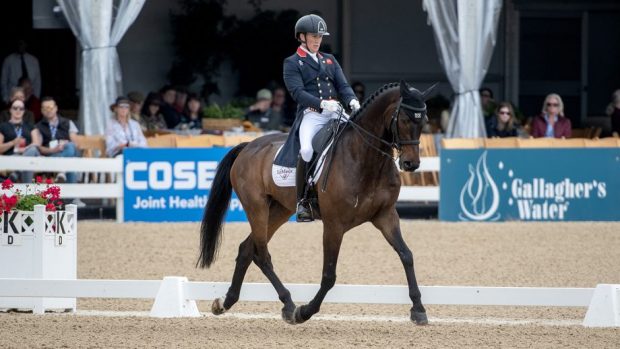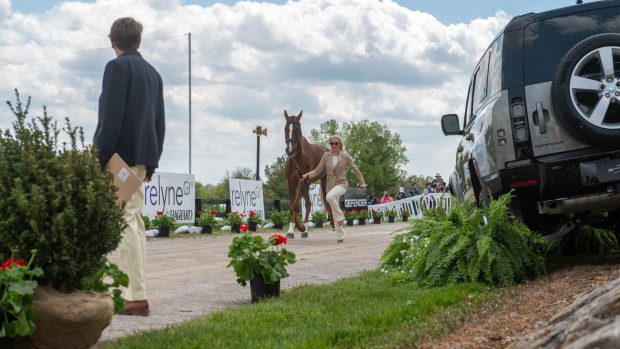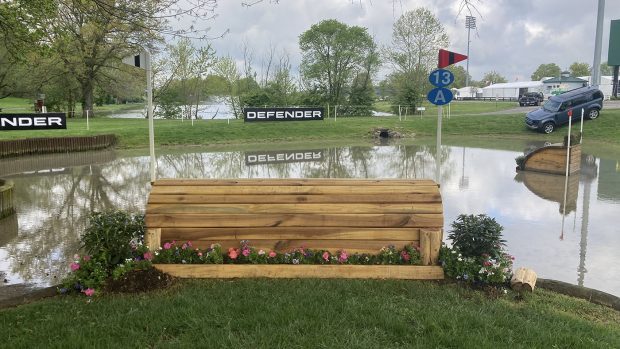Ever conscious of the need to make horse trials as safe as possible, the BHTA has changed the rules governing cross-country speed and, significantly, banned the use of stopwatches in pre-novice and novice classes.
Says Mike Tucker: “We have made this ruling to encourage riders to ride the course, rather than against the clock. Riders have to take responsibility for the speeds they are travelling at and we feel it is important that they learn to accurately judge pace as early in their careeras possible.”
Less experienced competitors may well be slightly horror-struck by the double blow of having their watches taken away and facing extra time-penalties for speeding, also new this season.
“I hate seeing people go too fast and then walking over the finishing line as much as anyone, but I think this is quite hard on less experienced competitors,” says Tina Gifford. “However, riders will just have to learn to cope with it. There’s a certain amount people can do at home to teach themselves how fast they should be going, such as timing themselves over a measured distance.”
“Judgement of pace can be worked on at home, like any facet of training,” agrees Blyth Tait, whose book Blyth Taits Cross-Country Clinic dedicates a whole chapter to this subject.
Rodney Powell suggests people learn to judge how fast they are going during their interval training.
“Cantering upsides an experienced competitor can give novice riders a good ideaof pace, as can watching others going round the cross-country.”
Says Ian Stark: “People can measure out distances at home, but in the end there is no substitute for experience. You have to just get out there and ride a few courses.”
“Just doing it is the best way to develop an idea of pace,” agrees Lucinda Green, who never wore a stopwatch at one-day events. “The best advice I had when I started out and thought I was going very fast, but ended up getting hundreds of time-faults, was to make sure you ride away from each fence rather than hanging around after landing.” Polly Clark advises leaving the start box with purpose.
“A lot of people set off very slowly and end up finishing much quicker. If they were conscious of this, they could waste much less time without actually going faster.”
Where the speeds have changed
While the speed at novice level remains at 520mpm, pre-novice speed has been reduced by 40mpm to 450mpm. Intermediates are set at 550mpm, in line with alterations made midway through last season, while advanced intermediates will remain at 570mpm.
Advanced classes stay at 600mpm, with authority given to BHTA stewards to reduce the speed in accordance with the going conditions.
“It’s extremely important to make our sport as safe as possible,” explains BHTA safety committee chairman Mike Tucker. “The safety committee feels that cross-country speed is an issue of concern, particularly at lowerlevels. By reducing the speed at pre-novice level, we have effectively removed the time factor altogether.”
In line with speed changes, time-faults for going too fast in pre-novices have seen a significant increase to one per second. The “time window” where no time-penalties are accrued has also changed at this level, the lower end of the bracket being calculated at the novice speed of 520mpm. Time-faults for exceeding the optimum time will remain at one for every three seconds.
How to manage without a watch
- Measure out a certain distance at home and time yourself over it. Try to include a fence on this exercise to give you a more realistic idea of going cross-country.
- Do your canter work upsides an experienced rider, as they can show you how fast you should be going.
- Watch other competitors at events, especially experienced riders, and see how fast they are going. Back this up by checking on the scoreboard to see how many time-faults they had.
- Walk the course with an experienced competitor; they will show you how you can save time by riding tight lines and shaving off the odd corner.
- Do not linger after landing; ride away from every fence on the cross-country.
- Do not go too slowly over the fast part of the course and then speed up towards the end. If you set out from the start with purpose and maintain the same pace throughout, you will gain many valuable seconds.


